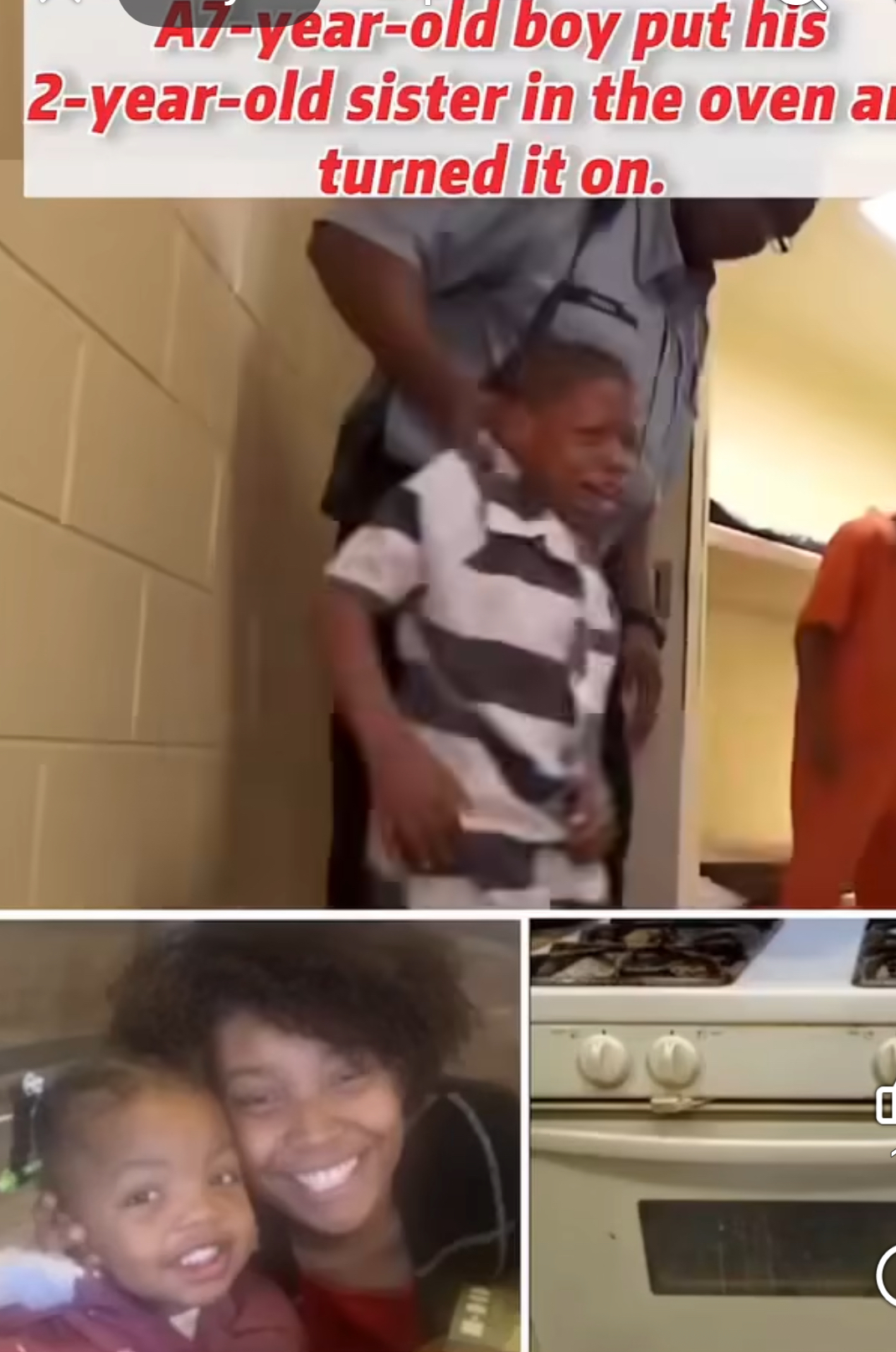The Breaking Point: When Love Means Letting Go
The Hamilton County Courthouse buzzed with anticipatory tension the moment seventeen-year-old Ryan Cooper entered Courtroom 3B, his chin raised in deliberate defiance, the rubber soles of his worn sneakers creating a distinctive squeaking rhythm against the meticulously polished marble floor. The assembled gallery—a mixture of court officials, reporters, community members, and family—turned their collective attention toward the teenager who had become something of a local notorious figure over the past twelve months.
Ryan didn’t carry himself like someone preparing to face sentencing for a systematic crime spree that had terrorized three suburban neighborhoods. Instead, his body language projected ownership, control, and complete dismissal of the proceedings that were about to determine his immediate future. His hands were casually shoved deep into the pockets of a black hoodie, and a slight smirk played across his features with the kind of arrogance that suggested he viewed the entire justice system as nothing more than an elaborate inconvenience.
Judge Alan Whitmore, a distinguished jurist with thirty-two years of courtroom experience, salt-and-pepper hair, and steel-gray eyes that had witnessed the full spectrum of human behavior, observed the young defendant’s approach with professional detachment tinged by growing concern. Throughout his extensive career on the bench, he had presided over hardened career criminals who showed genuine remorse, tearful first-time offenders overwhelmed by their circumstances, and individuals who demonstrated authentic understanding of their actions’ consequences.
Ryan Cooper represented something entirely different—a category of defendant that challenged the fundamental assumptions of juvenile justice philosophy.
The Pattern of Escalation
The teenager’s criminal history painted a disturbing portrait of escalating antisocial behavior and systematic disrespect for authority. His first arrest had occurred eleven months earlier for shoplifting expensive electronics from a major retail chain, an incident that his mother had initially attributed to peer pressure and adolescent poor judgment. The second arrest involved breaking into parked vehicles throughout a middle-class neighborhood, stealing everything from loose change to expensive GPS navigation systems.
The third and most serious offense had crossed a significant legal threshold: breaking and entering into the Morrison family residence during their weekend vacation, where Ryan had systematically ransacked their home, stolen valuable jewelry and electronics, and left behind evidence of his presence that suggested he had treated the violation as entertainment rather than necessity.
Each incident had been supported by overwhelming physical evidence, multiple witness testimonies, and Ryan’s own casual admissions to investigating officers. His responses to arrest had consistently demonstrated not shame or regret, but annoyance at being caught and confidence that his juvenile status would protect him from meaningful consequences.
The pattern suggested not impulsive teenage mistakes, but calculated criminal behavior from someone who had studied the system and concluded he was essentially immune to real punishment.
The Moment of Truth
When Judge Whitmore asked if Ryan had any statement to make before sentencing—a standard courtesy that often provided defendants with an opportunity to express remorse or accept responsibility—the teenager leaned confidently toward the microphone positioned at the defendant’s table.
“Yeah, Your Honor,” Ryan began, his voice carrying unmistakable sarcasm and contempt for the proceedings, “I suppose I’ll probably end up back in this same courtroom within a month or two anyway. You people really can’t do anything meaningful to someone my age. Juvenile detention? That’s basically summer camp with better security and regular meals.”
The courtroom’s collective gasp was audible and immediate. Seasoned court reporters who had documented thousands of proceedings looked up from their stenographic machines in shock. Members of the gallery, including several victims of Ryan’s crimes who had attended the sentencing hearing hoping for closure, exchanged expressions of disbelief and growing anger.
Judge Whitmore’s jaw visibly tightened, his professional composure tested by such blatant mockery of judicial authority. Throughout his distinguished career, he had encountered numerous forms of courtroom arrogance, but Ryan’s smugly confident dismissal of the entire legal system represented something particularly chilling—an open declaration of war against societal order itself.
The prosecuting attorney, Assistant District Attorney Maria Santos, slowly shook her head in evident dismay, while Ryan’s court-appointed defense counsel appeared genuinely embarrassed by his client’s performance, sinking slightly lower in his chair as if attempting to distance himself from the unfolding disaster.
“Mr. Cooper,” Judge Whitmore responded with carefully controlled firmness, his voice carrying the weight of three decades of legal authority, “you seem to believe that the law represents nothing more than an elaborate game, and that your chronological age provides you with permanent immunity from consequences. I want to assure you with complete clarity that you are currently standing at the edge of a very dangerous precipice.”
Ryan’s response came without hesitation or apparent consideration of the implications: “Precipices don’t particularly concern me, Your Honor.”
The Mother’s Breaking Point
Before Judge Whitmore could formulate his response to this latest display of contempt, a chair scraped loudly against the courtroom floor behind the defense table. Every head in the packed gallery turned toward the source of the disturbance.
Karen Cooper, a woman in her early forties whose appearance told the story of months of sleepless nights and emotional exhaustion, rose slowly to her feet. Her eyes, which had once sparkled with maternal pride, now reflected the particular weariness that comes from loving someone who systematically destroys everything they touch. Her hands trembled slightly, but her posture carried the determined steadiness of someone who had finally reached an irreversible decision.
Throughout every previous court hearing, Karen had maintained silent vigil in the gallery’s front row, hoping against increasingly impossible odds that her son would demonstrate some trace of genuine remorse or recognition of his victims’ suffering. She had attended each proceeding as his primary supporter, ready to provide emotional backing for what she desperately hoped would be his turn toward rehabilitation and responsibility.
But now, listening to Ryan boast about his criminal activities in front of a packed courtroom that included several of his victims, something fundamental inside her maternal protective instinct finally shattered beyond repair.
“That’s enough, Ryan!” she declared, her voice initially cracking with emotion but growing stronger with each word. “You don’t get to stand there and treat this situation like some kind of entertainment. Not anymore. Not while I’m watching.”
The courtroom atmosphere transformed instantly, shifting from tense anticipation to stunned silence. Judge Whitmore leaned back in his chair, his professional curiosity clearly engaged by this unexpected development. For the first time during the entire morning’s proceedings, Ryan’s self-assured smirk faltered noticeably, replaced by genuine uncertainty and what might have been the beginning of fear.
The Reckoning
Karen Cooper’s words seemed to hang in the air like a precisely aimed weapon, cutting through months of accumulated frustration, disappointment, and misdirected maternal protection. She had rehearsed countless variations of this conversation during sleepless nights spent pacing her kitchen floor, crafting desperate pleas, logical arguments, and emotional appeals that might somehow reach the sweet child she remembered holding in her arms seventeen years earlier.
But this was no longer a private family struggle conducted around their kitchen table. This was a public courtroom filled with strangers, legal professionals, reporters, and neighbors who had become victims of Ryan’s increasingly destructive behavior. The stakes had escalated beyond family dynamics to community safety and social order.
“I have bailed you out of trouble three separate times over the past year,” she continued, her voice gaining strength and authority with each sentence. “I have made excuses for your behavior to neighbors, school administrators, and police officers. I have covered for you, lied for you, and convinced myself repeatedly that you would eventually learn from these experiences and turn your life around. But instead of learning, you just keep laughing in everyone’s face—including mine.”
Ryan’s cheeks flushed red with embarrassment and anger. “Mom, please sit down,” he hissed urgently. “You don’t understand what you’re doing here.”
“I understand exactly what I’m doing,” Karen shot back with growing confidence. “I understand that I’ve been enabling your behavior by protecting you from consequences. Do you think I haven’t noticed the money disappearing from my purse? Do you imagine I was unaware of those nights when you disappeared for hours, assuming I was too exhausted from working double shifts to care about your whereabouts?”
A murmur of recognition and sympathy spread through the courtroom gallery. Karen’s words weren’t part of any prepared legal strategy or coached testimony—they represented raw, unfiltered truth from a mother who had finally reached her breaking point.
She turned toward Judge Whitmore, her posture straightening with newfound resolve. “Your Honor, my son believes he’s untouchable because I have been systematically shielding him from the natural consequences of his choices. He thinks the rules don’t apply to him because I’ve always been there to soften every blow, to make every excuse, to clean up every mess he creates.”
The Admission of Accountability
The courtroom’s attention focused entirely on Karen as she continued her unprecedented testimony. “If you want to understand why Ryan behaves the way he does, part of the responsibility lies with me. I made excuses for him when I should have enforced boundaries. I wanted so desperately to believe he was still the sweet little boy I used to read bedtime stories to that I ignored the growing evidence that he was becoming someone I didn’t recognize.”
Judge Whitmore nodded solemnly, his expression reflecting both professional appreciation and personal respect for her courage. “Mrs. Cooper, it requires tremendous strength to acknowledge that truth publicly.”
Ryan looked increasingly cornered, his characteristic bravado continuing to evaporate. “Mom, you can’t just throw me under the bus like this—”
“Yes, I can,” Karen interrupted with absolute finality. “Because if I don’t stop protecting you from reality right now, you’re going to end up in adult prison before you turn twenty-one. Or worse, you’ll end up in a coffin because you pushed the wrong person too far or got involved with criminals who don’t share your sense of invulnerability.”
Complete silence engulfed the courtroom. Even the bailiff, accustomed to dramatic moments during legal proceedings, shifted uncomfortably as the weight of Karen’s words settled over the assembled crowd.
Karen wiped a tear from her cheek but maintained her determined stance. “Your Honor, I cannot continue saving him from himself. If you believe that detention will provide the structure and consequences he needs, then send him. If you think harsher punishment is required to break through his arrogance, then impose it. But please—do not allow him to walk out of this courtroom believing he can continue living as if rules don’t apply to him.”
She paused, gathering herself for what was clearly the most difficult statement she had ever made. “He needs to understand that he is not above the law. More importantly, he needs to know that even his own mother will no longer stand behind his lies and excuses.”
The Legal Response
The prosecuting attorney glanced at Judge Whitmore with evident surprise at this unexpected turn in the proceedings. Defense counsel appeared to be reconsidering his entire approach to the case. Ryan sat in stunned silence, staring at the table, the fight visibly draining from his posture as he processed the magnitude of his mother’s public rejection of his behavior.
For the first time since entering the courtroom, the teenager was not in control of the narrative. His confident smirk had vanished completely, replaced by the shaky realization that his primary protector and enabler was no longer willing to shield him from the consequences of his actions.
Judge Whitmore adjusted his glasses and looked thoughtfully from Karen to Ryan before speaking. “This is certainly not the first time I have encountered a young person who believes they can test the boundaries of our legal system indefinitely,” he began with measured gravity. “However, what makes this case unique is witnessing a mother who finally found the courage to say ‘enough.’ That intervention, Mr. Cooper, may represent the last genuine opportunity you receive before life teaches you these lessons in far harsher ways.”
Ryan looked up, attempting to muster some remnant of his earlier defiance, but his voice cracked noticeably when he spoke. “So what happens now? You’re just going to lock me up because my own mother turned against me?”
Judge Whitmore’s expression remained stern but not unsympathetic. “If I believed you would treat detention as nothing more than an extended vacation, I would be tempted to wash my hands of this entire situation. However, I see a glimmer of hope in the fact that your mother still believes you possess the capacity for change—even though that belief requires her to entrust you to the correctional system.”
The Sentencing Decision
Assistant District Attorney Santos rose to present her sentencing recommendation, her approach notably influenced by Karen’s testimony. “Your Honor, the State recommends a sentence of twelve months in the Franklin County Juvenile Rehabilitation Center, with emphasis on structured behavioral modification, mandatory psychological counseling, educational completion requirements, and supervised community service specifically focused on repairing the damage he has caused to the neighborhoods he victimized.”
The defense attorney, perhaps recognizing that his client’s behavior had made any alternative arguments impossible, agreed that some form of significant intervention was clearly necessary to prevent Ryan’s trajectory toward adult criminal behavior.
Judge Whitmore delivered his ruling with the solemnity appropriate to such a pivotal moment in a young person’s life: “Ryan Cooper, after careful consideration of your criminal history, your attitude toward this court and the victims of your crimes, and the extraordinary testimony provided by your mother, I hereby sentence you to twelve months at the Franklin County Juvenile Rehabilitation Center.”
He continued with specific conditions: “You will participate in mandatory individual and group counseling sessions designed to address your apparent lack of empathy and disrespect for others’ rights. You will complete your high school education through the facility’s accredited academic program. Additionally, you will perform two hundred hours of supervised community service in the specific neighborhoods you victimized, working directly to repair the damage and fear you have caused.”
The judge’s final warning carried unmistakable gravity: “If you fail to comply with any aspect of this sentence, or if you demonstrate that you are treating this opportunity as anything less than the serious intervention it represents, you will be immediately transferred to adult court jurisdiction upon your eighteenth birthday to face adult charges for any subsequent criminal behavior.”
The gavel’s impact resonated through the silent courtroom with finality.
The Reality of Consequences
Ryan slumped forward in his chair, genuinely stunned by the realization that his confident predictions about the system’s inability to touch him had been completely wrong. For the first time, the arrogant teenager appeared small and vulnerable—just a frightened young man beginning to comprehend the reality he had spent months mocking.
As court officers prepared to escort him from the courtroom, Karen approached the defendant’s table one final time. Ryan avoided making eye contact with his mother, but she placed her hand briefly on his shoulder with a gesture that somehow managed to convey both love and finality.
“I love you more than you will probably ever understand,” she whispered, her voice breaking with emotion, “but loving you doesn’t mean allowing you to destroy yourself and hurt innocent people. This is the only path I have left to possibly save you.”
Ryan didn’t respond verbally, but his shoulders shook slightly as he was led away in handcuffs, the weight of his mother’s sacrifice finally beginning to penetrate his consciousness.
The Aftermath and Reflection
Outside the courthouse, several reporters approached Karen, asking whether she regretted her decision to speak publicly against her own son. She shook her head firmly, her response carrying the wisdom of someone who had made an impossibly difficult but necessary choice.
“Regret speaking the truth? No. It was the hardest thing I have ever done in my life, but Ryan needed to hear those words from me. Sometimes loving someone means allowing them to fall hard enough that they finally understand the solid ground beneath them. Sometimes the most loving thing a parent can do is refuse to catch them when they’re determined to jump off a cliff.”
She paused, looking back at the courthouse where her son was beginning the most challenging year of his young life. “I spent months trying to save him from consequences, and all I accomplished was teaching him that consequences don’t apply to him. Today, I finally started trying to save him from himself.”
The First Night of Reckoning
Later that evening, alone in his sparse cell at the Franklin County Juvenile Rehabilitation Center, Ryan found himself replaying the day’s events with unprecedented clarity. The laughter that had once come so easily when contemplating his ability to outsmart the system refused to surface. The jokes he might have made about his situation felt hollow and inappropriate.
Instead, he experienced something entirely unfamiliar: the full weight of his mother’s words pressing down on him with greater force than any judge’s sentence or correctional facility’s restrictions ever could.
For the first time in his criminal career, the physical walls surrounding him were not the most frightening aspect of his situation. What truly terrified him was the growing possibility that his arrogant behavior had cost him the relationship with the one person who had always stood by him, no matter how badly he behaved.
The stark realization that he might lose his mother’s love and support forever represented the first genuine consequence that had ever truly mattered to him. That recognition, arriving in the solitude of his cell, became the initial crack in the seemingly impenetrable wall of arrogance and entitlement he had constructed around himself.
For Ryan Cooper, this moment of genuine fear and regret marked the beginning of what his counselors would later recognize as the first sign of authentic rehabilitation—the acknowledgment that his actions had real consequences for people who mattered to him, and that some damage might be irreversible if he didn’t change fundamentally and immediately.
The boy who had entered the courtroom that morning convinced of his own invulnerability was gone forever. In his place sat a young man beginning to understand that growing up sometimes requires losing everything you thought you knew about yourself and the world around you.


















